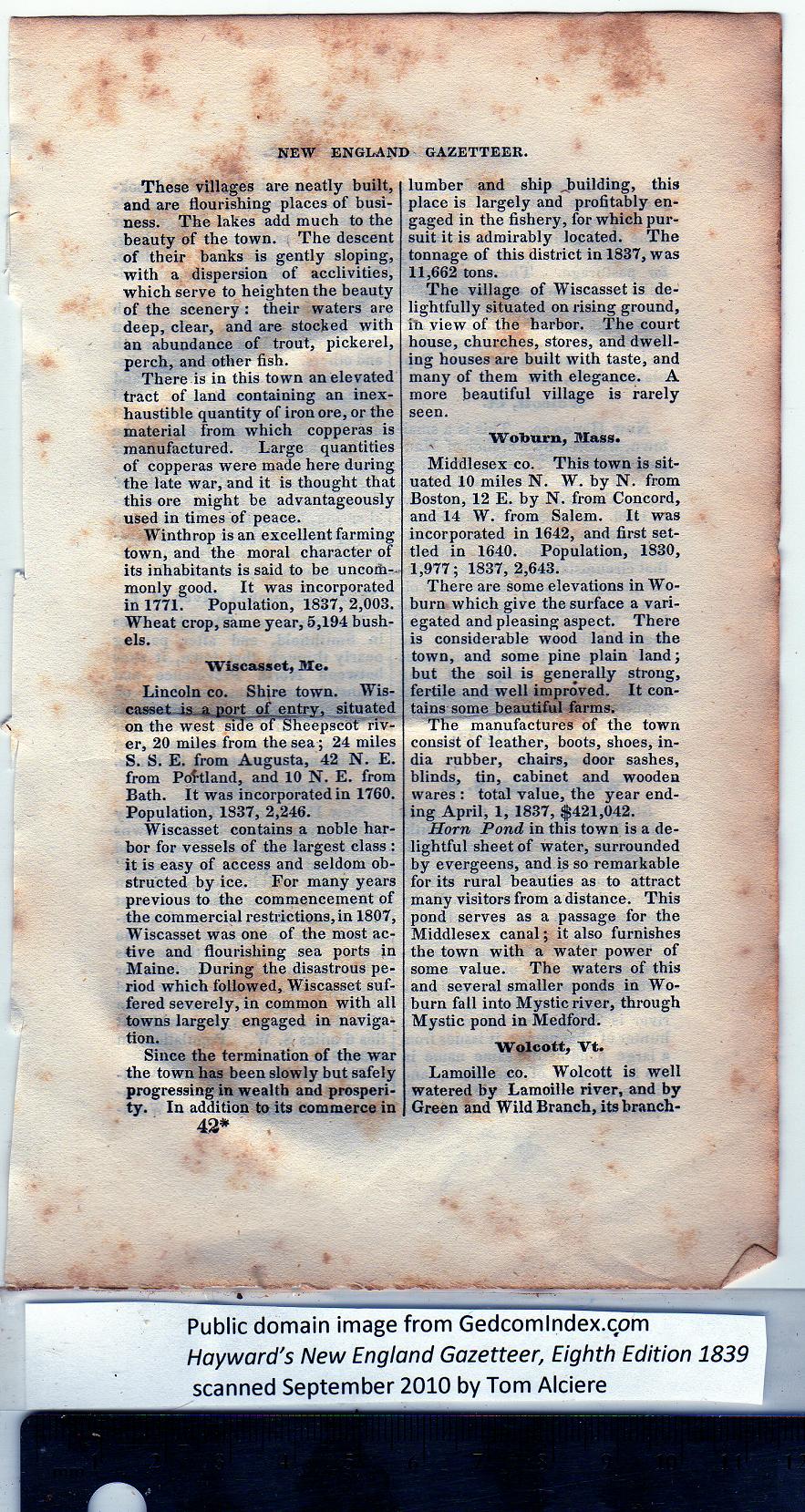|
These villages are neatly built,
and are flourishing places of busi-
ness. The lakes add much to the
beauty of the town. The descent
of their banks is gently sloping,
with a dispersion of acclivities,
which serve to heighten the beauty
of the scenery : their waters are
deep, clear, and are stocked with
an abundance of trout, pickerel,
perch, and other fish.
There is in this town an elevated
tract of land containing an inex-
haustible quantity of iron ore, or the
material from which copperas is
manufactured. Large quantities
of copperas were made here during
the late war, and it is thought that
this ore might be advantageously
used in times of peace.
Winthrop is an excellent farming
town, and the moral character of
its inhabitants is said to be uncoth-
monly good. It was incorporated
in 1771. Population, 1837, 2,003.
Wheat crop, same year, 5,194 bush-
els.
Wiscasset, Me.
Lincoln co. Shire town. Wis-
casset is-a port of entry, situated
on the west sicfe of Sheepscot riv-
er, 20 miles from the sea ; 24 miles
S. S. E. from Augusta, 42 N. E.
from Portland, and 10 N. E. from
Bath. It was incorporated in 1760.
Population, 1S37, 2,246.
Wiscasset contains a noble har-
bor for vessels of the largest class :
it is easy of access and seldom ob-
structed by ice. For many years
previous to the commencement of
the commercial restrictions, in 1807,
Wiscasset was one of the most ac-
tive and flourishing sea ports in
Maine. During the disastrous pe-
riod which followed, Wiscasset suf-
fered severely, in common with all
towns largely engaged in naviga-
tion.
Since the termination of the war
the town has been slowly but safely
progressing in wealth and prosperi-
ty. In addition to its commerce in
42* |
lumber and ship ^building, this
place is largely and profitably en-
gaged in the fishery, for which pur-
suit it is admirably located. The
tonnage of this district in 1837, was
11,662 tons.
The village of Wiscasset is de-
lightfully situated on rising ground,
in view of the harbor. The court
house, churches, stores, and dwell-
ing houses are built with taste, and
many of them with elegance. A
more beautiful village is rarely
seen.
Woburn, Mass*
Middlesex co. This town is sit-
uated 10 miles N. W. by N. from
Boston, 12 E. by N. from Concord,
and 14 W. from Salem. It was
incorporated in 1642, and first set-
tled in 1640. Population, 1830,
1,977; 1837, 2,643.
There are some elevations in Wo-
burn which give the surface a vari-
egated and pleasing aspect. There
is considerable wood land in the
town, and some pine plain land;
but the soil is generally strong,
fertile and well improved. It con-
tains some beautiful farms.
The manufactures of the town
consist of leather, boots, shoes, in-
dia rubber, chairs, door sashes,
blinds, tin, cabinet and wooden
wares : total value, the year end-
ing April, 1, 1837, $421,042.
Horn Pond in this town is a de-
lightful sheet of water, surrounded
by evergeens, and is so remarkable
for its rural beauties as to attract
many visitors from a distance. This
pond serves as a passage for the
Middlesex canal; it also furnishes
the town with a water power of
some value. The waters of this
and several smaller ponds in Wo-
burn fall into Mystic river, through
Mystic pond in Medford.
Wolcott, Vt.
Lamoille co. Wolcott is well
watered by Lamoille river, and by
Green and Wild Branch, its branch- |
